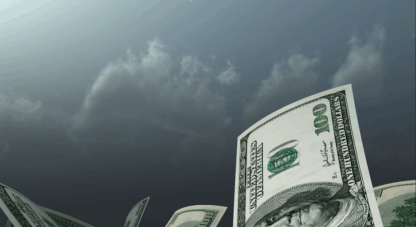View a Printable PDF Click Here
If you are looking at the big picture, something significant changed in the month of April. It’s a part of history already, but people won’t see its significance for probably another six, twelve, eighteen months. The event was that the Chinese began offering something new on the Shanghai gold exchange on April 19th. In contrast to the New York and London exchanges, which settle contracts primarily in paper money, the Shanghai exchange now offers yuan-denominated gold contracts that settle only in physical kilo bars.
This seems to me to be the continuation of a theme that has been in place for several years. Central banks have been accumulating gold since 2009. Individual investors throughout Asia – India always, but particularly China right now – have been taking physical delivery of metals. Most Americans have not participated in this trend due to their confidence in and focus on the U.S. dollar.
In London and New York, traders play paper games where 200 billion dollars in gold contracts – paper only – trade hands every day. That’s equal to 5,724 tons of purchasing each day, which is 182% of 2015’s worldwide mine production.
There is growing evidence that the above-ground stocks of gold in the large global gold market in London are moving into deficit. If there is any shift among this group of paper traders toward settlement in physical metals instead of in paper, that will remake the gold market as we have known it over the last four decades. The upshot of this new development is that you should own what you want to own as far as gold is concerned. The Chinese are going to provide true price discovery for an asset that has been controlled by paper, manipulated in price, and sharply segregated from real supply and demand dynamics for decades.
Of course most people aren’t alarmed by this information because confidence in the dollar remains high. There hasn’t been a shift in preference for delivery because people are perfectly fine taking paper assets as this point. However, that could soon change. Dominic Konstam from Deutsche Bank recently said that credit growth is not happening right now with low rates. He suggests lowering rates even more. Take them negative, and, in his words, penalize savers via a negative retail deposit rate and introduce a wealth tax.
Konstam’s proposal reminds me of how you know when you’ve come across an addict, when the cure for every ill is some kind of external stimulant. In this case we’re talking about stolen money from the average saver. Negative rates are nothing more than stealing money from a depositor.
Unfortunately, there are many policy-makers that think like this particular bank analyst. I don’t think they realize that stealing from people is not endearing; it is not even inspiring. To them it looks like a clear solution on paper: If we just lower rates into the negative territory, that’s going to stimulate more credit expansion in the economy. It seems to me that they didn’t study broadly enough because they don’t understand how people respond at the behavioral level, at the psychological level, to something that is the equivalent of economic electroshock therapy.
But they have equations that allow them to think insanely. When policymakers have an equation that works mathematically, it allows irrational thought to continue even if the equation doesn’t work practically. But then there’s the other side of the matter – the response of the people to such treatment. And on that topic, history provides some interesting perspective.
The Three Kinds of Bank Runs
Almost 30 years ago, Don McAlvany explained the bank runs of the 1930s to Kevin Orrick like this: They came in three forms. First, you had a lateral run. People started comparing financial institutions, and they moved from one bank to another, be it for interest rates or for safety. In the ’30s, it was for safety.
The second step was something Don called the in-and-out. People realize they aren’t getting enough reward for the risk they’re taking by leaving money in the bank, so they pull it out in cash. But then there is the third step – something Don called a double run. This actually occurred in the 1930s. It’s when people prefer something tangible to cash. Back in the ’30s, of course, before the gold confiscation, a person could hold a 20-dollar bill or they could hold a one-ounce 20-dollar gold piece. In step three, they opted for gold.
We have a very similar sequence occurring now, maybe for different reasons, but we’ve been seeing the initial lateral run. We’ve seen money moving from place to place since the 2008 crisis. Now we’re seeing the in-and-out. There is cash coming out because people are getting either zero or negative rates. The double run, however, is the third phase of an all-out bank run. That’s when people change their preference from cash payment to physical settlement. This is where they move out of cash itself.
This concept of a double run is very interesting because the fact that the London market is operating with a shortage of physical gold supply ties to one word – confidence. As long as confidence is unbroken, you won’t have a run.
However, we’ve seen an erosion of confidence that started back in 2000-2001. Its progression has been very gradual, but it accelerated with the global financial crisis in 2008 and 2009. For investors, confidence began to be challenged when Arthur Andersen was all of a sudden caught in fraudulent behavior relating to Enron, and Pacific Gas and Electric, and the price fixing of natural gas and energy. All of it was being covered up.
This was hugely significant. In corporate America people often said, “well, caveat emptor,” but the presumption was that you could always trust the accountants. This development created a major disconnect in the minds of investors. That was, I think, what started a multi-decade decline in confidence, which was exaggerated and accelerated in the 2008-2009 period. We may now be approaching the last stage, the double run, the stage when the breaking of people’s confidence extends all the way to their views of the central bank and its monetary instrument, the fiat dollar.
In the meantime, this Deutsche Bank analyst is suggesting that the central banks should lower rates. If that doesn’t work, lower rates some more; if that doesn’t work, lower them yet further. But people won’t stand still for that, as we’ve noted, so inherent in that course of action is some sort of form of people control. Now, we’re not used to people control here in the West because of our restrained form of government, but we’ve seen this experiment for the last 30-40 years in China. There has been an enormous wealth effect in China based on the fact that we decided to go into debt and buy their stuff and they decided to buy our debt. The problem is, China is running so much debt of its own that they are probably going to have to resort to good old-fashioned Chinese, possibly communist, control of the people because the prosperity is leaving the country.
While China’s numbers are bad, and are getting worse, they’re not far off from the U.S. figures. Look at private, corporate, governmental debt, inclusive of the financial sector here in the U.S., and the U.S. is awfully close to 300% debt to GDP, and it does take us over $4.50 growth in debt to create a dollar of GDP growth. So we, frankly, are both in a tough spot. I think China is more practiced at crowd control. They are more practiced at limiting expressions of discontent. And so, to some degree, by threat of force, they may be able to control a process of unwinding bad debts.
I think the PR campaigns of virtually every government and central bank around the world have included the message, “Move along, everything’s fine, we’re the experts, we have it under control.” Which, to a degree, they do. But only to a degree. That’s where the real problems crop up, not only here but in China. If everyone believes you are the master of the universe and you turn out to be a mere mortal, there is a breaking of confidence. There is a breaking of social trust.
So we’re back to that issue of confidence. What keeps everything in motion is one word. So you realize why there are so many games that are played to create impressions in the hope that those impressions will change behaviors.
What Happens When Confidence Is Broken
Historically, we can see what happens when confidence is suddenly broken. We can see it in Germany in the early 1920s. Germany actually had slight deflationary pressures – 1%, 2%, 3% inflation at the max. And then confidence was broken in the paper mark at that time and they went into a hyperinflationary change.
Obviously the Germans were in a very difficult position dealing with war reparations from the Treaty of Versailles. It was basically an unbearable burden. So they engaged in massive deficit spending. They exhausted the debt markets domestically because they didn’t have access to the international debt markets, and as soon as the debt markets were full to capacity – imagine a sponge that just can’t take another drop of water, it is fully soaked. That was the domestic economy in Germany.
At that point, the printing presses were the only solution. The only way that they could pay bills and get anything done was following the Haverstein message of, “We can print our way to prosperity.” Albert Edwards – the über bear at Société Générale – suggests that this chapter in economic history boils down to social and political chaos for precisely this reason. He says this: “As the equity markets spiral into a deep bear market, as it ends with corporate bond spreads exploding [in other words, the yields on corporate bonds getting much bigger than what you would see relative to a risk-free rate like the interest rate you would see on treasuries]. It ends with social unrest, it ends with double-digit budget deficits. It ends with investors losing faith with the Fed. It ends with deeply negative rates, with currency and trade wars, with helicopter money, and, ultimately, inflation.” I think it is an interesting time, and again, it ties back to this issue of confidence.
We talked earlier about equations that actually allow you to think irrationally. There is an equation that tells you that you have to take on a certain amount of debt to be able to grow. Richard Duncan brings that out. He says that because we have so much debt, we have to take out a certain amount of debt every year in addition to that just to show growth, otherwise we sink into a depression.
And this is where, clearly, we’re on the horns of a dilemma, as a group. Do we like that? No. Do we recognize that the system is debt-addicted, and without more of it we might end up with paralysis or death? Yes. So pragmatically, what do you do? How do you respond to that? Consumer debt is on the rise again. It is growing at the fastest pace since 2001. And that is viewed as a good thing, according to the modern paradigm. So, from the Richard Duncan perspective, if debts don’t grow fast enough, we’ll face a financial reckoning of cataclysmic proportions.
But is it good to see the consumer spending more? It is the same old disease. Why wait until tomorrow to purchase something when I actually have the savings instead of buying it today on credit? If you step back, you can see that there are only two kinds of people in the world. There are those who pay interest, and those that receive it. And those that pay it are not victims of the system, they are not at the end of an evil banking cabal. They are victims of their own ignorance, lacking, perhaps, a preceding generation to tell them, as a father or grandfather would, as a mother or a grandmother would, that it is better to save than to spend.
You have the graying generation in America today that rebelled against an earlier American practice of thrift, and they have proven to not be the greatest generation of the years past, but the most selfish, frankly. And their children know only that as a paradigm, by example. The legacies we leave will either pay homage to the sensible things life has taught us that we pass on from one generation to the next, or they will be a permanent testament to social amnesia and foolishness. And I fear that the addiction to debt at every level in our society today indicates that we have overwhelmingly chosen the latter.
* * *
* * *















